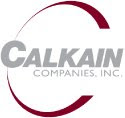By: Patrick Nutt
The alphabet soup of government stimulus programs can be both overwhelming and somewhat perplexing, however it does seem we are finally seeing the results of the initial TARP program, and any bi-partisan committee will most likely tell you it worked (while then adding their political spin of whether or not they approve of the current or former administration).
No, the $350 Billion dollars pumped into the financial system to prop up banks did not help you or your friend’s sister’s aunt get that new loan she wanted to buy a vacation condo, but that was never the intent. What that program was designed to do, and accomplished, was to re-gain the overall confidence of the consumer in the overall banking system. Bank of America stock, trading at $2.50 just six months ago, has rebounded to $17.50; JP Morgan Chase was at $15.00 and is back up near $45.00. If these prices are any indication that the consumer is confident in the largest financial institutions in the United States, I would say TARP worked.
The Term Asset-backed Loan Facility (TALF) is an entirely different program aimed at thawing the frozen market for securities collateralized by consumer debt (such as credit card debt and auto loans), student loans, SBA loans, and now commercial real estate mortgages. The TALF program was announced back in November 2008, however Shopping center REIT, Developers Diversified (NYSE: DDR) is one of the first firm to actually secure financing through this program. DDR recently applied for and finalized the details on $2B in TALF financing….and here comes the interesting part, it’s not cheap! DDR is working with two investment banks; Goldman Sachs and Citigroup, to prepare the two issuances of debt. While all the details have not been made public, a board member recently commented on the basic terms:
Tranche 1
- Underwriters performed a 5-year cash flow projection
- Carved out 15% for additional vacancy and credit loss
- Applied a 9% CAP rate on the resulting Income
- Providing financing based on 30% LTV with an all-in cost of debt near 6%
While the cost of debt is attractive, the extremely low leverage point constricts the assets being used to either debt free or nearly debt free. What happens if you want more leverage you ask???? Well DDR asked for more debt with the second batch of properties valued at $1B and here is the result:
Tranche 2.
- Underwriters performed a 5-year cash flow projection
- Carved out 15% for additional vacancy and credit loss
- Applied a 9% CAP rate on the resulting Income
- Providing financing based on 30% LTV with an all-in cost of debt near 6%
- For the debt component covering from 30% to 35%, the cost of debt is above 11%
- For the debt portion increasing leverage from 35% to 40%, the cost of debt is around 13.5%
As you can see, if you need a higher ratio of debt, it becomes cost prohibitive very quickly. While this solution worked for DDR to help shore up their overall portfolio and deal with some of the smaller debt maturities, this is clearly not the answer to the $700 Billion dollar problem formerly know as the CMBS market circa 2003-2007.
Tuesday, September 22, 2009
Subscribe to:
Post Comments (Atom)





No comments:
Post a Comment